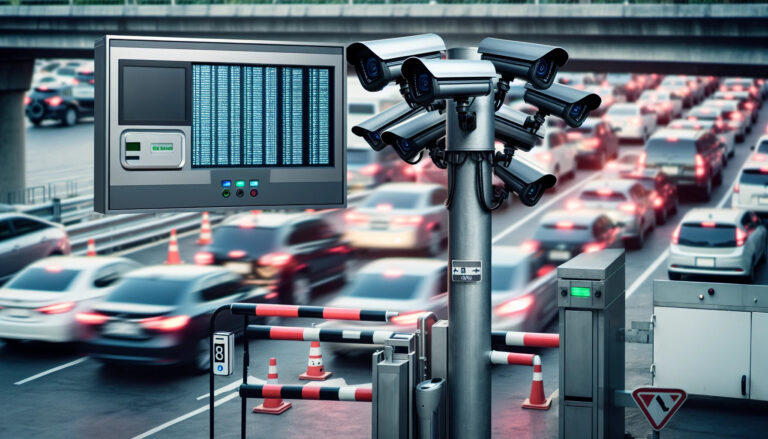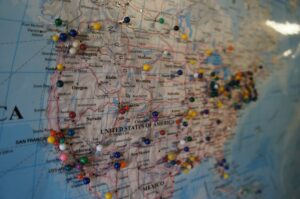Imagine a world where security and surveillance are revolutionized, providing a safer environment for everyone. License Plate Recognition (LPR) software, also known as license plate recognition software, is making this vision a reality, transforming the way we monitor and manage vehicles in various settings. From enhancing security to streamlining parking management, LPR technology is reshaping the landscape. In this blog post, we will explore the ins and outs of this advanced license plate recognition software, its benefits, challenges, and future developments.
Article Overview
- License Plate Recognition Software is a sophisticated technology used for security and surveillance.
- LPR systems offer improved security, efficient parking management, access control & perimeter protection.
- Future trends in LPR tech include AI, Edge Computing & Multi-camera systems to enhance accuracy and scalability.
Understanding License Plate Recognition
License Plate Recognition Software, also known as Automated License Plate Recognition, is an advanced technology that captures, analyzes, and stores license plate data for a wide range of security and surveillance applications. This sophisticated software combines image manipulation techniques, optical character recognition, and standard home computer hardware to accurately identify license plates using automated license plate readers.
There are various types of license plate readers available, including stationary automated license plate reader (ALPR) cameras, mobile ALPR cameras, and mobile automatic number plate recognition (ANPR) systems. Factors such as vehicle speed, ambient light, headlight glare, and environmental conditions need to be considered when implementing LPR software as they can impact the system’s performance.
For instance, certain ANPR systems only recognizes license plates with specific license plate characters, focusing on Latin characters, and those with three or fewer characters are not supported.
Benefits of Implementing License Plate Recognition Systems
Deploying License Plate Recognition Systems offers numerous advantages, such as enhanced security, effective parking management, and access control by recognizing license plate numbers.
These benefits will be elaborated in the subsequent sections.
Improved Security and Surveillance
In the United States, ANPR systems have the capability to match license plates against databases like:
- “wanted person”
- “protection order”
- missing person
- gang member
- known and suspected terrorist
- supervised release
- immigration violator
- National Sex Offender lists
These systems are useful for law enforcement as it can allow them to quickly identify criminal activities. Infrared light is often used in these systems to improve license plate visibility in low light conditions. Approximately 71% of US police departments utilize some form of ANPR, allowing law enforcement to monitor and track vehicles of interest more efficiently.
Mobile ALPR cameras offer significant advantages for law enforcement officers, including:
- Capturing license plates of parked cars and hundreds of passing vehicles in a relatively short period
- Patrolling daily with real-time license plate reading capabilities
- Allowing for immediate interdiction when a vehicle of interest is detected
Besides the US, countries like Italy also use advanced monitoring systems like Celeritas and T-Expeed v.2, along with surveillance cameras, to boost security and surveillance efforts. These systems work together to provide comprehensive monitoring and real-time alerts, ultimately improving public safety and crime prevention.
Efficient Parking Management
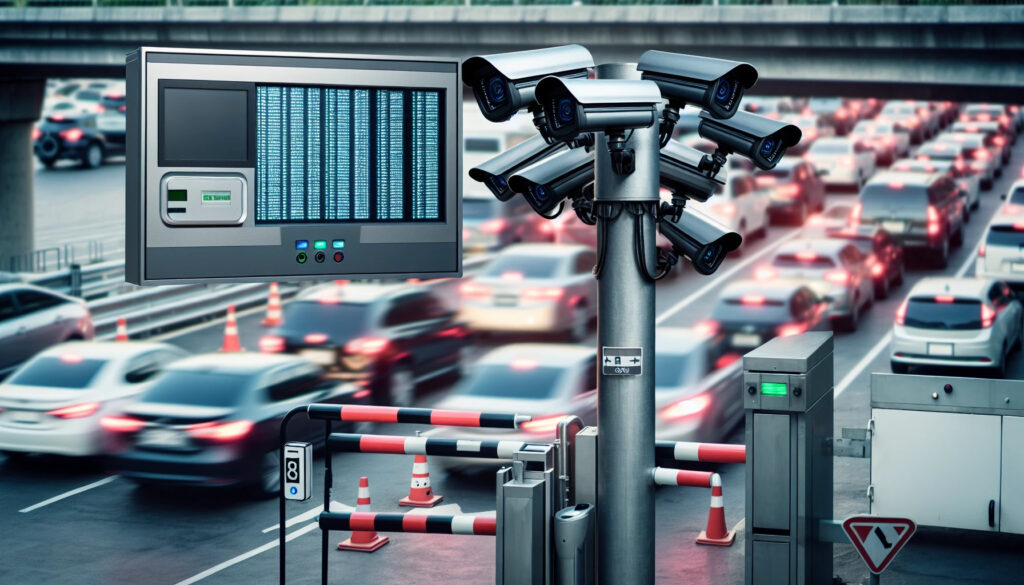
LPR software simplifies vehicle entry and exit points in parking systems by using intelligent technology to swiftly and accurately interpret license plates. This technology serves as an access control system, allowing vehicles with recognized license plates to enter and exit the parking area with ease, eliminating the need for physical tickets or access cards. This streamlined process benefits both drivers and parking management by enhancing efficiency and convenience.
LPR software tracks parking duration by combining image processing, recognition, and tracking processes. Here’s how it works:
- Cameras capture images of vehicles’ license plates.
- Recognition techniques detect and recognize the number plates.
- Once a vehicle is detected, the software tracks its entry and exit time to calculate the parking duration.
- This allows for effective monitoring and management of parking spaces.
Managing visitor access is another crucial aspect of efficient parking management, and LPR software excels in this area by permitting only vehicles with registered license plates to enter and exit the parking area. This ensures that only approved visitors are granted access, while also providing a fast and effective way for parking management to monitor visitors.
Access Control and Perimeter Protection
Automatic Number Plate Recognition (ANPR) technology is employed in sensitive facilities to enhance access control, observe suspicious or anomalous activity, and compare against watch lists. Several US agencies have procured ANPR for perimeter security applications. These include:
- Department of Homeland Security
- Department of Justice
- Department of Transportation
- Department of Defense
Sensitive facilities that use ANPR for perimeter security and access control include:
- Embassies
- Schools
- Airports
- Maritime ports
- Military and federal buildings
- Law enforcement and government facilities
- Transportation centers
Extensive ANPR systems are also implemented in cities like Boston, London, and New York City to provide comprehensive security against terrorist activities and facilitate public events and public areas.
Integrating ANPR systems into access control and perimeter protection strategies allows these facilities to fortify their security measures and guarantee occupant safety. As technology advances and the global market for automatic license plate recognition expands, the potential applications will continue to grow, further enhancing security and access control in various settings.
Key Features to Look for in License Plate Recognition Software
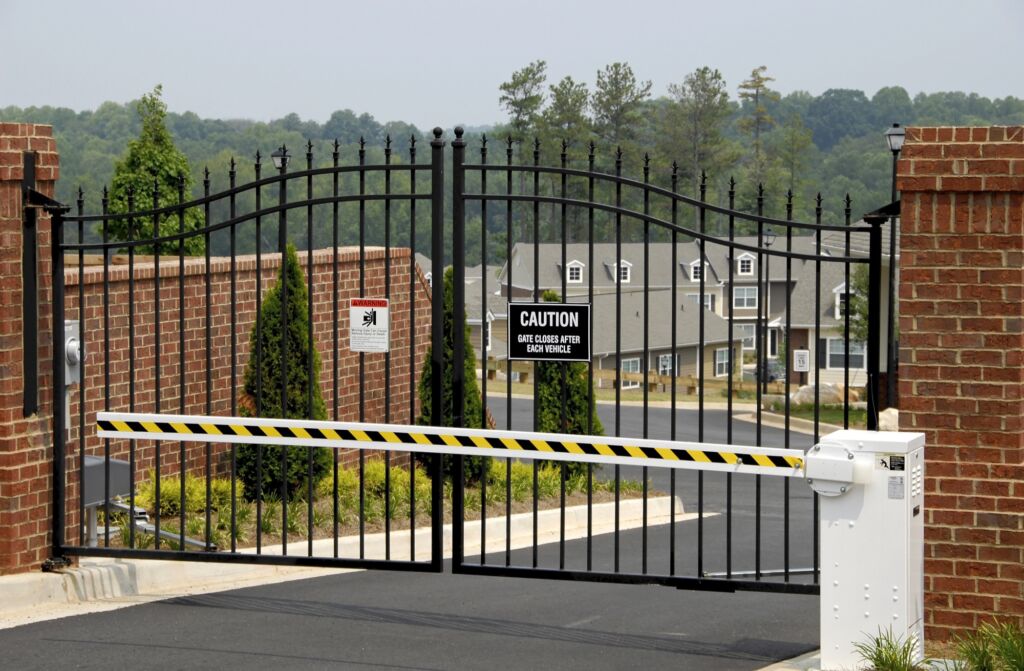
When selecting LPR software, considering key features that contribute to the system’s effectiveness is important. Some of the core features include:
- Real-time detection and recognition of license plates
- Automated matching against a watchlist
- Ability to capture images of license plates using cameras
- Capability to convert license plate numbers into computerized text using OCR technology
The efficiency of the LPR software directly depends on its accuracy, making it a critical factor. OpenALPR’s commercial software, for example, boasts an accuracy range of 95-98%, while Sighthound’s ANPR software has an accuracy rate of 93.6%.
Another key feature is real-time alerts, which provide immediate notifications when a match is found. This allows security personnel to monitor and regulate access instantly, thus enhancing corporate security and employee safety.
Customizable reporting and seamless integration with existing security systems are also vital features to consider. Customizable reporting allows users to tailor the software to their specific requirements, such as creating reports on distinct license plates or vehicles. Effortless integration with existing security systems allows for a more comprehensive security solution, as the LPR software can be combined with other security systems such as access control and CCTV.
Overcoming Challenges in License Plate Recognition
Implementing LPR systems accompanies challenges such as:
- obscured plates caused by other vehicles, tow bars, or bike racks
- plate inconsistencies
- varying light conditions
- jurisdictional differences
To overcome these challenges, advanced algorithms and imaging hardware are required.
For instance, LPR software must be able to handle discrepancies in plate designs, fluctuating lighting, and variations between jurisdictions. The software should be robust enough to accurately recognize plates from different jurisdictions despite variations in format, font, color, layout, and other plate features. ALPR technology’s accuracy is such that there is a minimal error rate in the translation of alphanumeric characters that are similar in shape.
When an ALPR system triggers an alert, the user must ensure that the plate which caused the alert is consistent with the state indicated on the in-car computer. By addressing these challenges and continuously refining the technology, alpr systems can provide reliable and efficient license plate recognition for various applications.
Real-World Applications of License Plate Recognition Software
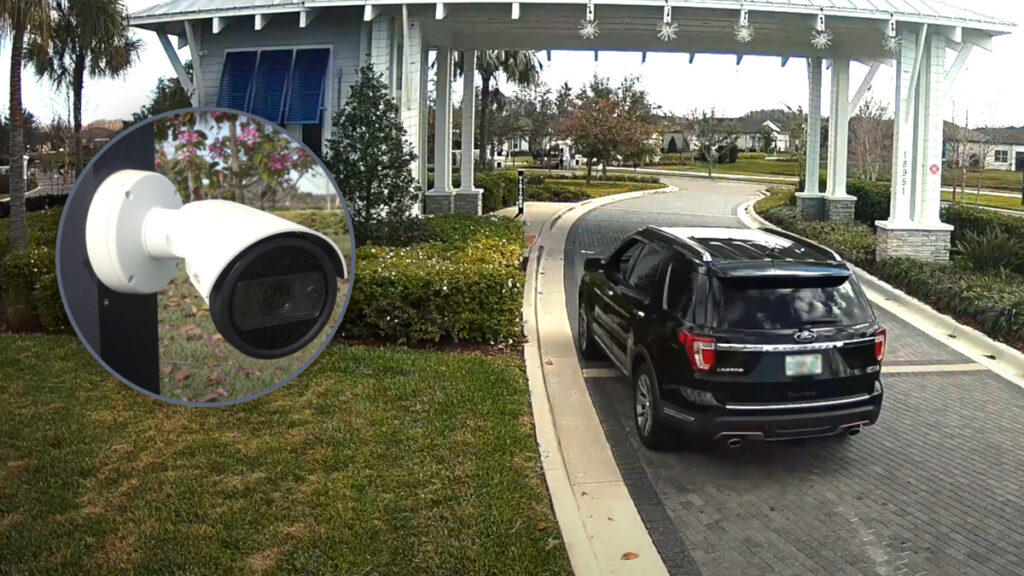
LPR software finds practical applications across a variety of industries including:
- Law enforcement: agencies can utilize ALPR data for the recovery of stolen cars, locating abducted children, searching for uninsured drivers, and tracing individuals with overdue court fees
- Traffic control
- Private security
- Enterprise services
In addition to law enforcement, LPR systems are employed for traffic control, such as etoll fee collection in Johannesburg, South Africa, and monitoring the movement of individual vehicles to provide data on the speed and flow of various routes automatically. Mobile ANPRs enable law enforcement officers to patrol daily with real-time license plate reading capabilities, allowing for immediate interdiction when a vehicle of interest is detected.
Private security and enterprise services can also benefit from LPR software by incorporating it into their security systems to monitor and manage access to their facilities. By implementing LPR technology, businesses can improve security, streamline operations, and enhance customer satisfaction across various industries.
Privacy Concerns and Legal Considerations
The use of LPR systems can lead to potential privacy and legal implications like misuse, misidentification, and surveillance issues. To address these concerns, legal regulations dictate the usage of information obtained through LPR devices, with various provincial privacy laws governing the collection, storage, and use of license plate data.
Techniques employed to circumvent ANPR systems, such as plate covers, sprays, smearing the plate with dirt, and utilizing covers to mask the plate, can lead to legal repercussions. Deliberately obscuring license plates is an offence. It can be either a Class C or a Class B misdemeanor. Punishment in the former case is a fine of up to US$200, while that for the latter crime is a fine of up to US$2,000 and 180 days in jail..
For responsible use of LPR technology, users should be aware of potential privacy concerns and legal considerations surrounding its implementation. By understanding these issues and adhering to the relevant regulations, LPR systems can be utilized effectively while respecting individual privacy rights.
Choosing the Right License Plate Recognition System for Your Needs
Choosing the right LPR system requires consideration of factors like accuracy, ease of use, integration capabilities, and cost. Camera specifications, community needs and infrastructure, data analysis options, and automation and surveillance capabilities should also be taken into account when choosing an LPR system.
The efficiency of LPR systems is directly related to their accuracy. An increase in accuracy of detecting and recognizing license plates leads to improved precision, recall rate, and recognition rate. Usability is another crucial factor, as it influences the overall effectiveness of LPR systems. Automation, crime deterrence, video footage capture, optoelectronic and environmental factors, efficiency, readability, usability, and innovation all impact the usability of LPR systems.
Integration capabilities, such as:
- Integration with entry points
- Video Management Systems (VMS)
- AI systems
- Other law enforcement systems
- IoT technology
Can increase the utility and efficacy of LPR systems in different applications. By considering these factors, you can choose the right LPR system that meets your specific needs and requirements.
Case Studies: Success Stories of License Plate Recognition Software Implementation
There are numerous case studies that display the successful implementation of LPR software across different industries. For example, the city of Lancaster, CA, implemented LPR technology as part of its public safety systems, resulting in enhanced security and surveillance. Private businesses can also benefit from LPR technology by incorporating it into their security systems to reinforce safety protocols and generate valuable data.
By capturing and analyzing vehicle license plate information, LPR technology is transforming the retail industry. It contributes to an improved customer experience, promotes safe practices, personalizes digital menus, and enhances overall retail security. In the parking management sector, LPR software has automated various tasks and reduced the need for staff to be present on-site, providing touchless entry and frictionless parking access and control.
These success stories demonstrate the potential of LPR software to transform security, efficiency, and customer satisfaction across multiple industries. As technology continues to advance, the applications and benefits of LPR systems will undoubtedly expand, unlocking new possibilities for businesses and organizations worldwide.
Future Trends and Developments in License Plate Recognition Technology
With the evolution of LPR technology, advancements like the incorporation of:
- Artificial intelligence
- Deep learning
- Edge computing
- Multi-camera systems
- Mobile LPR
can be expected. These developments are intended to improve the accuracy, efficiency, and scalability of LPR systems, as well as enhance real-time analysis and identification capabilities. The global market for automatic license plate recognition is predicted to significantly expand in the near future.
LPR software has the potential to provide applications in a range of industries, including:
- Law enforcement
- Parking management
- Toll collection
- Border control and customs
- Retail and marketing
- Smart cities
As LPR technology continues to advance, it will open up new opportunities for businesses and organizations to enhance their security measures and streamline operations.
Staying updated about the latest trends and developments in LPR technology enables businesses and organizations to adopt advanced solutions that cater to their unique needs and make the most of the many benefits that LPR systems offer. The future of LPR technology is bright, and its potential applications are virtually limitless.
Summary
In summary, License Plate Recognition software is a powerful tool that is transforming the security and surveillance landscape across various industries. From enhancing public safety to streamlining parking management, LPR technology offers numerous benefits, as well as presents challenges and privacy concerns that must be addressed.
As we look to the future, the continued advancement of LPR technology promises to unlock new potential applications and expand its impact across both public and private sectors. By staying informed about the latest trends and developments, we can harness the power of LPR technology to create a safer and more efficient world for everyone.
Frequently Asked Questions
How much does the ALPR system cost?
The traditional ALPR system has an upfront cost ranging from $10,000 to $30,000, plus additional costs for maintenance and software subscriptions. A start-up cost of approximately $30,000 for a pole mount, $20,000-$25,000 for a mobile unit, $75,000 for server/hardware/software, and $3,000 for the processor/BOSS is required for agencies utilizing this system.
Which technology is used for automatic number plate recognition?
Automatic Number Plate Recognition (ANPR) uses Optical Character Recognition (OCR) to capture and identify license plates, which can then be stored along with associated processed images.
How do automated license plate readers work?
Automated license plate readers capture images of license plates and convert them into text files using optical character recognition technology. The data is then stored in a database, along with associated metadata like date, time, and location.
How accurate is automatic number plate recognition?
Overall, Automatic Number Plate Recognition (ANPR or LPR) is highly accurate, with reports indicating it reads license plates in the high 90% range. However, its accuracy is dependent on the readability of the plate itself.
What does ALPR stand for?
ALPR stands for Automated License Plate Recognition, a law enforcement system that optically scans vehicle license plates.

